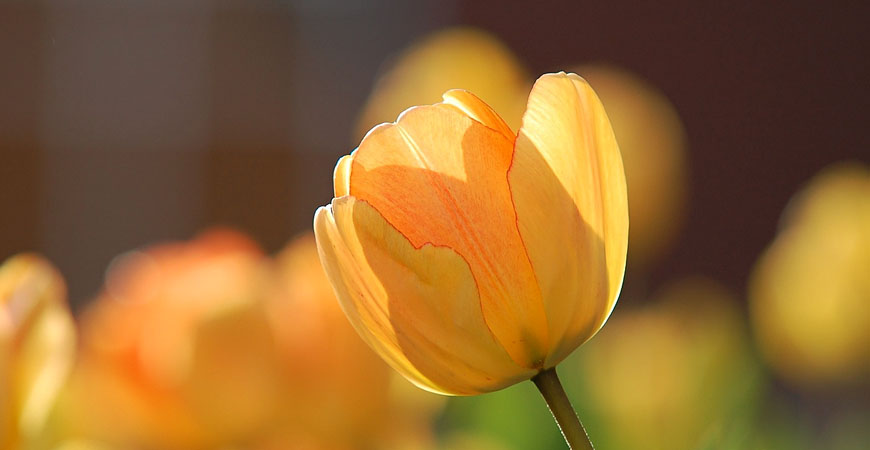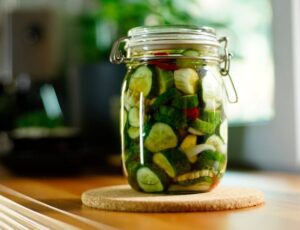
All About Planting Spring Blooming Bulbs in Fall
Bright and beautiful tulips, daffodils, and hyacinths are welcome cues of spring’s arrival. But to enjoy these lovely plants requires a little planning ahead as spring-flowering bulbs should be planted in the previous fall. Cool fall weather allows time for the bulbs to winter over, producing cheerful flowers the following spring.
Below are hints and how-tos on planting spring-blooming bulbs in fall.
Spring flowering bulbs can be purchased at the garden, home retailers, or online. If you buy early, bulbs can be stored in a cool, dry place for a month or so.
A few spring blooming favorites include:
Daffodils

Tahiti Daffodil
Hardy and easy to care for, daffodils are available in a vast range of flower types, including trumpet, large-cupped, double, jonquilla, miniature, poeticus, and small-cupped.
Daffodil varieties include-
- Butterfly – two-toned daffodils that come in pink, white, orange, and yellow. Butterfly daffodils thrive in sunny areas.
- Tete-a-tete (miniature) – the most popular miniature type of daffodil. Tete-a-tete bloom in the early spring.
- Cheerfulness – bloom in the mid or late spring and can be forced indoors for winter bloom. Cheerfulness daffodils have a sweet fragrance.
- Golden Ducat – has large, vibrant yellow petals and blooms in the mid-spring.
- Tahiti – gold and orange in color, these blooms will brighten your garden.
Tulips

Foxtrot Tulip
Tulips come in various colors, making it easy to have a vibrant garden when just sticking with this type of bulb.
Tulip varieties include-
- Darwin – classic tulip shape and come in various colors such as yellow, orange, and red. Darwin tulips grow well in full sun and partial shade.
- Foxtrot – bloom in the early to mid-spring. Foxtrot tulips are a mix of pink and white colors.
- Pink Star – feathered petal edges with large magenta and apricot blooms.
- Purple Peony – deep purple, Purple Peony tulips bloom in the late spring and have a sweet fragrance.
- Red Emperor – a favored type of tulip with its bright blooms; Red Emperor tulips prefer full sun.
Hyacinths

Blue Jacket Hyacinth
Hyacinth bulbs come in single, double, and multiflora flower types.
Hyacinth Varieties include-
- Blue Jacket – will flower in mid-spring. Blue Jacket hyacinth returns annually with vibrant blue florets.
- Carnegie – long-lasting and have a beautiful fragrance. The white color of the Carnegie hyacinth flowers is known by many.
- Miss Saigon – deep purple blooms that look beautiful next to daffodils. Miss Saigon hyacinths prefer full sun or partial shade.
- Jan Bos – will bring an alluring fragrance to your garden. Jan Bos hyacinths come in a bright hot-pink color.
- Hollyhock – pink in color; Hollyhock hyacinth has double florets. It will grow in mid to late spring.
Crocus

Pickwick Crocus
If you plant more than one type of crocus, your garden will have flowers throughout the spring season as varying types of crocus bloom at different times.
Crocus Varieties include-
- Yellow Mammoth – large yellow flowering crocus that will flower in the early spring.
- Pickwick – calyx-shaped flowers that open when the sun shines. Pickwick crocus has purple and white striped flowers with an orange stamen.
- Joan of Arc – white flowers with an eye-catching orange stamen. Flowers close at night and open in the morning.
- Remembrance – prefer full sun to partial shade. Remembrance crocus are purple flowers in a cup-like shape.
- Tri-color lilac-blue petals with a white band and orange center. It will grow in the early spring.
When to Plant Spring Blooming Bulbs
Plant your bulbs when evening temps are between 40 to 50 degrees or six weeks before your area’s first hard freeze. You can check your state’s frost date online at The Old Farmer’s Almanac.
If you live in planting zones 8 to 11, your spring-flowering bulbs may require pre-chilling to bloom the following spring. To pre-chill bulbs, put them in your refrigerator for approximately 6 to 10 weeks. (Don’t store them near fruit as the emitted ethylene gas can harm the bulbs.)
Save the label packaging from your purchased bulbs to determine the bulb type and bloom color. It’s easy to get mixed up as the bulbs look similar.
Where to Plant Spring Blooming Bulbs
Spring flowering bulbs can be planted almost anywhere with plenty of sunlight and well-drained soil. The choices are endless on a garden slope, under deciduous trees, in containers or along a fence border!
Bulb Planting- Step by Step

- Dig and loosen the soil to an 8-inch depth, removing small rocks, weeds, and leaves as you go.
- Follow the instructions on the packaging to determine planting depth. Overall, small bulbs are usually planted at a 5-inch depth; larger bulbs are planted approximately 8-inches deep.
- Place the bulb in the prepared hole with the pointed side toward you. Plant the bulb on its side if it’s hard to tell top from bottom. It will find its way upward.
- Once the bulbs are in place, slightly overfill the holes with soil. Lightly press down the soil with your hand or the back of a trowel to ‘firm’ them in. Water thoroughly.
Landscape Ideas for Flowering Bulb Placement
Creatively arranging bulbs in the garden to form a striking visual display is an art in itself. Whether you prefer wide swaths of color or neat, orderly rows, here are a few flowering bulb design ideas.
High-low
Plant early blooming, low-growing bulbs in the front and plant taller, late-blooming bulbs in the back. The taller, late-blooming variety will hide the withering leaves of early blooming varieties.
Large Swaths and Clusters
Planting bulbs in a long, thin line looks sparse and less exciting. Large swaths or clusters of flowers create an impressive, eye-pleasing display. Large groupings of a singular color make an especially spectacular show.
Succession Planting
Extend your flower show by staggering bulb bloom times. Plant early, mid and late-season daffodil bulbs together to create an ongoing flower display. You’ll enjoy a succession of blooming plants over several weeks.
After Bloom Care
When your flowers have ceased blooming, trim the flowers with shears but leave the green. Bulbs use the foliage to store nutrients for next season’s plants. It’s safe to trim the plants when the foliage has turned yellow.
Planning ahead is worth it when planting these blooming bulbs this fall. Springtime will bring beautiful flowers throughout your garden thanks to the little extra time you spent in your garden this autumn.
Interested in reading more gardening hints and tips? Click here.
Want to learn more about home decor? Click here.














